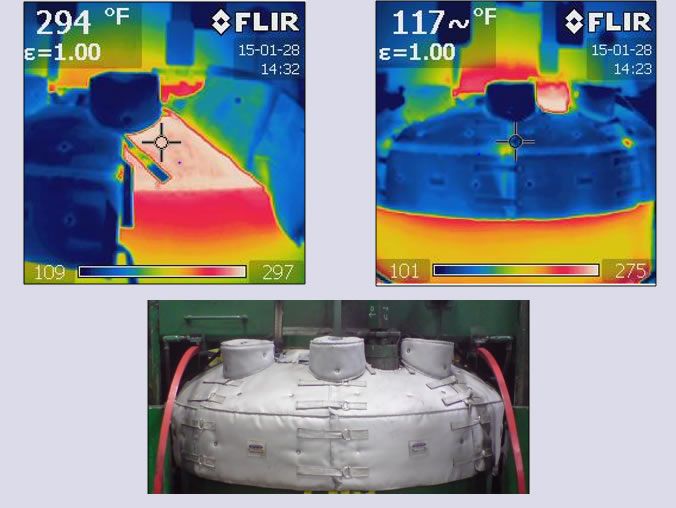The one-two punch of energy surveys and thermographic imaging mark the starting point for determining what kind of insulation design best suits a client. Through the energy surveys, a sales person determines not only the geometry of the system but also the temperatures involved, using a variety of technologies, including infrared guns and thermographic imaging.
“The most common and fastest measure is using an infrared gun, which shoots a single beam to a surface, and from that single point of contact, you get a surface temperature,” said Frank Kovacs, CEO and president of Shannon Global Energy Solutions.
The infrared gun is excellent at quickly determining temperatures to keep the survey process timely, but it does not always draw the whole picture. That’s where thermographic imaging helps.
“Instead of shooting a single point of reference with a gun, you’re capturing a pallet of pixels with imaging,” added Kovacs. “You’re actually taking a picture of the surface in pixel format, and obtaining a larger profile of the surface conditions.”
That pallet helps not only in determining which blanket design to apply, but also provides the data to calculate how the blanket should perform. Facility managers can also use the imaging after installing the blankets to confirm the calculations from energy surveys.
“It’s a reference temperature used in the heat-loss calculation to determine performance before and after insulation,” said Kovacs.
On top of this, thermographic imaging shows temperature differences across a range of surfaces, which helps identify energy loss as it happens, while conducting the all-important energy surveys.
“The beauty of thermographic imaging is that you can see a compelling variance of temperatures from one area to another, and it defines or identifies problems in the field,” said Kovacs.
Identifying these problems and insulating them accordingly translates into savings in energy and money for the buyer of removable, reusable insulation and his or her business.

